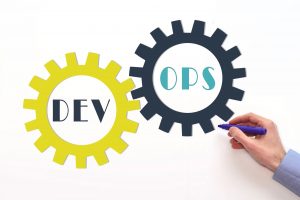
How to Become a Data Analyst: A Career Guide
Posted by Walid Abou-Halloun Date: Feb 14, 2018 1:00:16 AM
In this digital age, there is little that’s more valuable than data.
The amount, breadth, and depth of data that can be gathered at every point of a company’s internal and external processes is remarkable. It gives decision-makers at every level information and insights that can make product and service development more of a science than art.
And data analysis is at the core of evolution of the way businesses grow and make money.
Do you want to know how to become a data analyst? Are you ready to be part of the rapidly growing and changing digital data industry?
This career guide covers everything you need to know to get started.
What is a Data Analyst?
The first step in learning how to become a data analyst is being clear on the definition.
In the briefest terms, data analysts retrieve and process data. Their goal is to use data to predict, identify, and resolve business issues. Many times, they are also involved in identifying operational and market opportunities.
To process data, analysts look at it through multiple lenses. They filter and sort it, manipulate it to put it next to other data, and much more. Ultimately, they will reach conclusions about the data and offer their insights to decision-makers.
A data analyst is not a data scientist, although the line between the two can be fuzzy. In most cases, the largest distinction between the two roles has to do with algorithms.
Data scientists write algorithms. Their goal is to create data.
Data analysts use the output from data scientists to create “pictures” or “stories” relevant to business functions. Examples include in-depth sales trends, analyses, and correlations between customer behaviour and inclement weather filtered through socioeconomic lenses.
Data analysts also differ from data administrators. Analysts aren’t involved in the management of hardware and software used to create, store, and secure data.
Typical Roles and Responsibilities
The primary role of a data analyst is to make raw data usable for decision-makers in various business functions.
For example, they study data about employee attendance and use of health benefits to help an HR leader make decisions about policies and programs. Or, they dive into the data generated by online retail users to assist a marketing leader to shape the next campaign.
When learning how to become a data analyst, imagine a bridge. In a data analyst role, you connect the study to the past to help build a strong and viable connection to the future.
There can be a wide range of responsibilities depending on a company’s size, maturity, and culture. But the most common include:
- Analysing large and complex data sets using statistical techniques.
- Interpreting results of scenario runs.
- Contributing to data collection requirements and strategies.
- Presenting data analysis reports to internal clients.
In smaller organisations, data analysts can also be involved in the maintenance of databases and testing assumptions used to create algorithms.
Educational Requirements
Like many digital professions, there isn’t one specific path or degree that makes you a data analyst. It’s a combination of technical education and hands-on experience that builds careers. That being said, having a Bachelor Degree in Engineering, Information Technology or Science may be a requirement for certain roles and organisations.
There are many ways to gain certification that will help make you more valuable to employers.
Some of the more popular and valuable certifications are:
- Cloudera Certified Associate (CCA) Data Analyst
- IBM Certified Data Architect – Big Data
- Microsoft Certified Solutions Expert (MCSE): Data Management and Analytics
- MongoDB Certified DBA Associate
- SAS Certified Big Data Professional
Before seeking any kind of certification, be sure to be well-versed in SQL. It’s the most popular and fundamental database language. Knowing your way around a SQL database will serve you well throughout your career.
The data industry and related technologies are constantly evolving. For that reason, it’s not uncommon for employers to invest in their best talent by paying for a data analyst’s certification in a specific system.
Technical Skills Every Good Data Analyst Needs
Table stakes for becoming a data analyst include high-level competence with Microsoft Excel and SQL. You also need basic web coding and data mapping skills. Plus, the ability to find patterns in large data sets and derive actionable insights from data.
You also need to be fluent in programming languages. The most common are R and Python.
Sought-after data analysts enhance their ability to work R and manipulate data sets by learning dplyr, ggplot2, ggally, and ggpairs.
Reshape2 is another important system to know for converting to and from wide format and long format data.
Knowing Python allows you to take advantage of data analysis tools such as pandas, anacoda, scipy, ipython, and seaborn.
Companies are investing in data analysis. With the right skillset, knowledge and technical skills, you will quickly become an asset to any organisation.
Soft Skills, Aptitude & Temperament
Data analysts must be comfortable analysing large amounts of data whether in language or numerical form.
The presentation of findings is a key aspect of the job. Those who can translate complex data into narratives and pictorial formats (e.g. infographics and simple charts) that their target audience can understand, will excel.
Critical thinking is an essential skill. Data analysts must be able to study numbers, trends, and exceptions without presumed conclusions and opinions.
Lateral thinking, the ability to transfer knowledge or insight from one scenario to a seemingly different one is a valuable skill among data analysts.
People with an aptitude for solving complex numerical and pattern-related puzzles often do well in an analyst role.
Another crucial soft skill is attention to detail. Data analysts must remain vigilant about accuracy and documentation of their work for verification.
Many successful data analysts have a methodical and patient temperament. They can’t get frustrated or distracted while sifting through data, slicing and dicing it in various ways in search of an answer to a business problem.
How to become a data analyst that people listen to? Develop high emotional intelligence.
Being able to understand the emotions behind business problems and issues can help strengthen your career in two ways.
First, if you can easily understand the emotional aspect of a business problem, you can better present the data-oriented solution or clue to a solution.
Second, most often, data analysts work in teams. The better you are at managing your emotions and respecting your colleagues’ emotions, the more effective a collaborator and leader you’ll be.
Industry Awareness
Data is an industry. Most call it Big Data. And, if the last few years are anything to learn from, it grows and changes rapidly.
Staying informed about the latest discoveries, controversies, and regulations related to data as an industry helps you build a long and viable career.
If you want to know how to become a data analyst who is plugged into the industry grapevine, start with newsletters. Sign up for news from SAS, Oracle and other major players in the industry.
Also join smaller forums, especially those focused on the secondary industry in which you work or want to work. Let’s say you want to know how to become a data analyst for a clothing retailer. Find a forum with an abundance of other data professionals in the clothing or retail sectors.
The Future of Data Analysis
Nothing is guaranteed, but the outlook for careers in data analysis is strong. Governments, businesses, and researchers have yet to hit the saturation point for generating and using data.
The diversity of skills needed to serve the data industry is a benefit to anyone starting out or looking for a new career. It offers flexibility. It gives you room to explore specialising in different languages or analysis techniques.
But most of all, it means employers are hungry for talent.
How to Become a Data Analyst in Different Countries
There are several ways to learn how to become a data analyst who travels the world. The two that work best are joining a multi-national organisation and freelancing.
The beauty of working with data is that most of the time, it can be done from almost anywhere. Companies with operations in multiple countries, often focus more on skill sets than the location of its data analysts. There can be opportunities to work in international offices or travel for major project meetings.
Freelance or contract data analysts can capitalise on the nomadic nature of digital work. If your technical skills are strong, and you’re reliable from a distance and can market yourself, there’s no reason why you can’t have clients around the world.
When companies hire remote analysts on a project basis, the cost of flying them to various locations for major meetings or conferences is insignificant.
No matter what staffing model a company uses, there’s a need for data analysis skills. This need will only continue to increase as data and what can be done with it continues to be realised.




